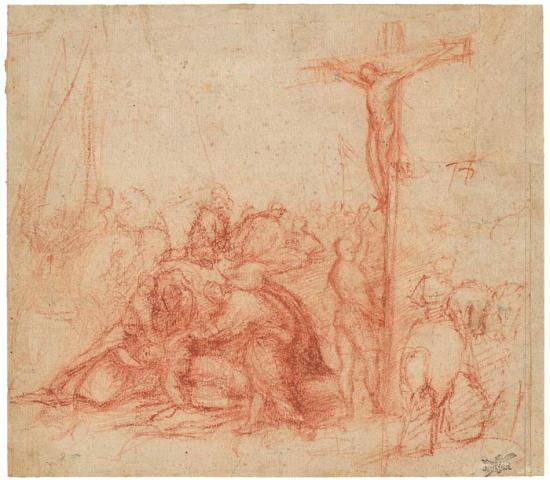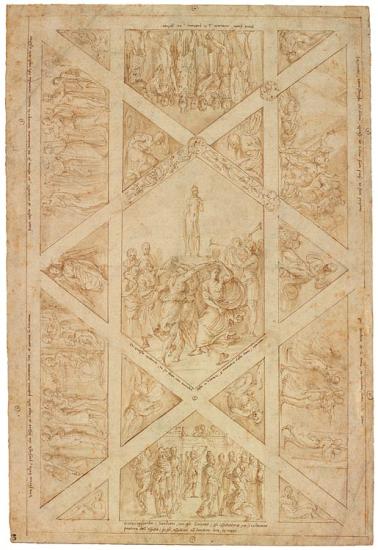Terraferma
At the beginning of the sixteenth century, Venice's mainland possessions, called the terraferma, stretched westward from Udine nearly all the way to Milan and included Padua, Vicenza, Verona, Brescia, and Bergamo. These Venetian strongholds ensured a continuous food supply and safeguarded trading routes to the north. Even though Venice's enemies combined to form the League of Cambrai and defeated the city in 1509, much of the mainland territory was recovered within a decade.
Venice's political independence and unified territories allowed artists considerable mobility. Some preferred to return to their native cities in Lombardy, Friuli, or the Veneto, where they established flourishing workshops. Distinctive local traditions—such as the realism of the Lombard painters of Bergamo and Brescia—also endured. The Veneto area in particular served as a country retreat for Venice's patrician families, who erected idyllic villas in the classical tradition designed by Andrea Palladio.
Giovanni Antonio da Pordenone

Crucifixion
Purchased by Pierpont Morgan, 1909
Pordenone used this quick exploratory sketch to map out the initial design for his fresco of the Crucifixion painted in 1520–21 on the inner wall of the facade of Cremona cathedral. In order to incorporate changes to the composition, the sheet was cut at the right, where the artist inserted the rectangular piece with the horseman.
The Cremona frescoes are remarkable for their violent expressivity, which borrowed elements from northern painting and prints.
Terraferma
At the beginning of the sixteenth century, Venice's mainland possessions, called the terraferma, stretched westward from Udine nearly all the way to Milan and included Padua, Vicenza, Verona, Brescia, and Bergamo. These Venetian strongholds ensured a continuous food supply and safeguarded trading routes to the north. Even though Venice's enemies combined to form the League of Cambrai and defeated the city in 1509, much of the mainland territory was recovered within a decade.
Venice's political independence and unified territories allowed artists considerable mobility. Some preferred to return to their native cities in Lombardy, Friuli, or the Veneto, where they established flourishing workshops. Distinctive local traditions—such as the realism of the Lombard painters of Bergamo and Brescia—also endured. The Veneto area in particular served as a country retreat for Venice's patrician families, who erected idyllic villas in the classical tradition designed by Andrea Palladio.
Battista Franco

Ceiling Design with the Story of the Slave Girls of Smyrna
Inscribed above or below each scene, in pen and brown ink, with descriptions of the episodes depicted
Purchased as a gift of the Fellows, 1984
Seven episodes recount the victory, through female initiative, of the ancient city of Smyrna over the inhabitants of Sardis. When the Sardians offered to end their siege in return for the wives of Smyrna (1), a beautiful slave girl proposed that she and her companions go instead (2). The girls dressed the part and were welcomed by the Sardians (3, 4), who were later taken prisoner when they were overcome by sleep (5) and held captive in Smyrna (6). From then on a festival to Venus was held every year in honor of the slave girls and their victory (7).
The drawing may have served as the design for the decoration of a villa.
Terraferma
At the beginning of the sixteenth century, Venice's mainland possessions, called the terraferma, stretched westward from Udine nearly all the way to Milan and included Padua, Vicenza, Verona, Brescia, and Bergamo. These Venetian strongholds ensured a continuous food supply and safeguarded trading routes to the north. Even though Venice's enemies combined to form the League of Cambrai and defeated the city in 1509, much of the mainland territory was recovered within a decade.
Venice's political independence and unified territories allowed artists considerable mobility. Some preferred to return to their native cities in Lombardy, Friuli, or the Veneto, where they established flourishing workshops. Distinctive local traditions—such as the realism of the Lombard painters of Bergamo and Brescia—also endured. The Veneto area in particular served as a country retreat for Venice's patrician families, who erected idyllic villas in the classical tradition designed by Andrea Palladio.
Paolo Veronese

Studies of Jupiter Astride the Eagle
Purchased by Pierpont Morgan, 1909
Like the studies of Bacchus and Apollo in the Morgan's collection, the present drawing is associated with Veronese's frescoes on the vault of the upper loggia in the Palazzo Trevisan, Murano.
Veronese likely kept the present sheet in his workshop, for the upper sketch of Jupiter astride his eagle was reused in a now lost ceiling canvas executed for the Palazzo Pisani, Venice.
Terraferma
At the beginning of the sixteenth century, Venice's mainland possessions, called the terraferma, stretched westward from Udine nearly all the way to Milan and included Padua, Vicenza, Verona, Brescia, and Bergamo. These Venetian strongholds ensured a continuous food supply and safeguarded trading routes to the north. Even though Venice's enemies combined to form the League of Cambrai and defeated the city in 1509, much of the mainland territory was recovered within a decade.
Venice's political independence and unified territories allowed artists considerable mobility. Some preferred to return to their native cities in Lombardy, Friuli, or the Veneto, where they established flourishing workshops. Distinctive local traditions—such as the realism of the Lombard painters of Bergamo and Brescia—also endured. The Veneto area in particular served as a country retreat for Venice's patrician families, who erected idyllic villas in the classical tradition designed by Andrea Palladio.
Lattanzio Gambara

Massacre of the Innocents
Gift of Janos Scholz, 1980
With the death of his teacher and father-in-law, Girolamo Romanino, in 1560, Gambara became the leading artist in Brescia. Completed in 1573, the frescoes in the nave arcade and internal facade of Parma cathedral depicting scenes from the life of Christ were his most prestigious commission. This is a late compositional study for one of those scenes, Massacre of the Innocents, which includes The Flight into Egypt as a vignette at upper left. The daringly foreshortened horse and rider at right reveal the influence of Pordenone.
Terraferma
At the beginning of the sixteenth century, Venice's mainland possessions, called the terraferma, stretched westward from Udine nearly all the way to Milan and included Padua, Vicenza, Verona, Brescia, and Bergamo. These Venetian strongholds ensured a continuous food supply and safeguarded trading routes to the north. Even though Venice's enemies combined to form the League of Cambrai and defeated the city in 1509, much of the mainland territory was recovered within a decade.
Venice's political independence and unified territories allowed artists considerable mobility. Some preferred to return to their native cities in Lombardy, Friuli, or the Veneto, where they established flourishing workshops. Distinctive local traditions—such as the realism of the Lombard painters of Bergamo and Brescia—also endured. The Veneto area in particular served as a country retreat for Venice's patrician families, who erected idyllic villas in the classical tradition designed by Andrea Palladio.